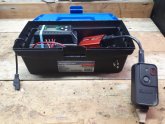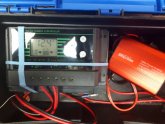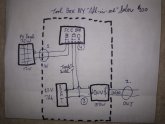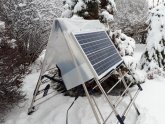I needed an excuse to get started so, not having a man cave shed, I thought I'd start with the existing 110vac Christmas lights on the shrub in the backyard! And then I'll look at some of those 12v garden spotlights in the spring.
So far I have these parts:
All I need now is some sun!
So far I have these parts:
- 25W PV panel
- panel to be mounted on my wife's portable metal clothes drying rack (OK for now but she may want it back in the spring!)
- 10W PWM charge controller
- 12V 7Ah SLA battery
- 150 W inverter (awaiting delivery with "cigar lighter" adapter)
- to be housed in an existing small plastic tool box (if it fits)
- Kill-a-watt clone wattmeter to monitor watts used
- sunset switch to control lights
All I need now is some sun!












